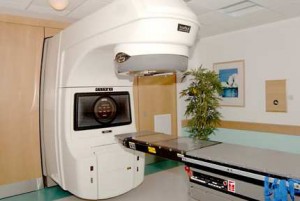Treatments for Prostate Cancer, what are the options?
There may be a number of suitable treatments, and for patients with suitable localised disease these might include: active surveillance, radical prostatectomy (surgical prostate gland removal which we are able to do using the da Vinci TM robot in a minimally invasive way), radical radiotherapy and brachytherapy.
At the Robotic Prostatectomy Centre Cambridge we offer robotically assisted laparoscopic radical prostatectomy, also known as robotic prostatectomy. This has the advantages over traditional open prostatectomy of shorter hospital stay, less pain,less risk of infection,less blood loss and transfusions, less scarring, faster recovery and quicker return to normal activities. For more information on this please read our guide to treatment option for men with localised prostate cancer and see our information sheet about robotically assisted laparoscopic radical prostatectomy, or robotic surgery for prostate cancer.
You may also watch a video of the operation by clicking this link
Active Monitoring (AM) or Active Surveillance (AS)
This describes one method of management where we carry out frequent, careful observation of your prostate gland by means of digital rectal examination and by measuring the level of PSA in the blood. The reason we sometimes recommend this method of management is because not all cancers are at high risk of progression. In more elderly men with low volume Gleason grade 6 cancers, the risks are very low and active monitoring can be a very good form of treatment.
It can also be used whilst men are making up their minds about different forms of treatment and it can be used to monitor how aggressive the tumour might be. The reason is that, if a cancer does not progress on monitoring, you will not need more radical forms of treatment. In younger men we sometimes carry out further biopsies over time to ensure the cancer has not changed in nature. This is then known as active surveillance.
The advantage of active monitoring is that it involves no aggressive intervention and there are, of course, no side-effects. The disadvantage is that PSA level is not entirely reliable in predicting when a tumour has grown and sometimes further biopsies of the prostate gland are required.
Some men find that they become very anxious whilst on active monitoring and worry all the time about the prostate gland; for such patients, this is not a good form of management.
Radiotherapy | Conventional external beam therapy
This involves a total of up to 37 treatments over several weeks with the radiotherapy being given in low doses to minimise side effects.
Sometimes we advise you to have three months of hormone treatment before starting the radiotherapy in order to shrink the prostate gland and to improve the effectiveness of the radiotherapy. In men with higher risk cancers, hormonal treatment is continued for 12 to 24 months after the radiotherapy is completed.
Once again if you wish to have further information about this we will provide you with a detailed information sheet.
In general terms, radiotherapy, whether provided by external beam or by brachytherapy, can be an effective treatment in some menwith early prostate cancer. It has side effects, including irritation to the bladder (blood in the urine) and bowel (rectal bleeding). These are usually mild in nature and frequently settle after a period of time. More severe, permanent, side-effects occur in about 5-10% of people.
Brachytherapy
We have now established brachytherapy (see picture below) at Addenbrooke’s Hospital, led by Dr Simon Russell (Clinical Oncologists) and Mr Andrew Doble and Mr Christof Kastner (Consultant Urologists). Brachytherapy is a good form of treatment in a man with no symptoms of BPH (no difficulty in passing water or urinary frequency) and where the prostate cancer is small (T1C), of Gleason grade 6 or less and low volume. Brachytherapy involves two steps under a general anaesthetic.
In the first, an accurate estimate of the size, shape and position of the prostate gland is made.
Go to the information sheet on brachytherapy planning
Subsequently, a number of seeds are placed throughout the prostate gland under ultrasound control using a special template. These seeds contain radioactivity and provide a high local dose of radiation to the prostate gland.
Go to the information sheet on brachytherapy treatment
High risk locally-confined cancers
There is increasing evidence that surgery can be a good treatment for men with more locally-advanced or high risk cancers. This is offered here in Cambridge where it is accompanied by extended resection of local lymph nodes. External beam radiotherapy with hormonal manipulation is carried out commonly in the UK. It has become clear that surgical treatment can offer continued and sustained cure rates in such patients even if they require radiotherapy post-operatively.
There is good evidence from randomised clinical trials that,following radical prostate surgery for more locally aggressive cancers, a short course of radiotherapy has minimal side-effects but improves the long-term outcome of surgical treatment in some men. Usually we offer careful PSA monitoring under such circumstances and reserve radiotherapy for situations where the PSA rises.
Primary surgery for such locally-aggressive cancers is feasible because it is possible, after initial surgery, to carry out further treatment, including hormone manipulation and radiotherapy. It is, however, difficult to offer surgical treatment to men who have failed radiotherapy treatments.
Further information
Links to further information about prostate cancer can be found here.



 Tel: +44 (0) 7735548892
Tel: +44 (0) 7735548892 Fax: +44 (0) 1223 216069
Fax: +44 (0) 1223 216069 Email:
Email: